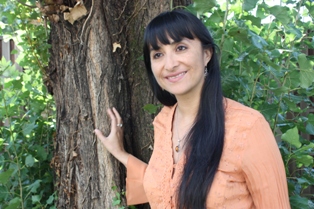Youth violence prevention - Jamaicans have an ear to the ground

Jamaica is struggling with violence. This small island has one of the highest murder rates in the world - 62 per 100,000 in 2009 - and many are looking to find out what other countries in the area are doing.
It was the Canadian government agency IDRC that put two and two together. Feeling that there would be an opportunity for a meeting of minds, he put Interpeace and the Jamaican Chapter of the International Alliance for the Prevention of Violence together – two programmes that the Canadian government funds.
Working across Central America
Interpeace’s work on youth violence prevention policies extends across Central America. From Guatemala, El Salvador and Honduras to Belize, Panama, Nicaragua and Costa Rica Interpeace are working to develop recommendations on how to prevent youth violence at the policy level.
Isabel Aguilar Umaña, Director of Interpeace’s Central American Youth Programme explains: “The prevention policies are not developed behind the closed doors of an office. We work directly with all involved in an inclusive process of dialogue to come up with proposals that will work hard for the people we are looking to support.”
The dynamics of violence differ between the two regions
Members of the Jamaican Government, security sector, civil society, academia and the international community joined Interpeace at the University of the West Indies in Mona, Jamaica to hear more about what Interpeace has been doing across the Central America Region.
With most attention placed on the areas that could be useful to the Caribbean island, interesting lessons were coming from all the participants. Structural causes differ between the two regions but many of the risk factors are shared.
Youth are disconnected from political system
Isabel highlighted the importance of the role of youth, no matter which country they are in, and just how crucial it is to connect them to the political debate: “Young people find themselves completely disengaged with the political system which leads them to violence, both as perpetrators and victims.” Isabel highlighted the common misconception: “Youth are often labelled as the future of any society. Actually they make up the society NOW. Tomorrow is too late. They need to be considered as a key voice in the development, democracy and peace discussions today!” She went on to confirm: “A greater importance must be placed on their involvement within the political process.”
Isabel also highlighted some of the other issues that the youth of Central America are facing. Ever since 1996, the region has experienced a rapid growth in social violence and crime. These problems are having severe consequences on every level of society, including the social, political, cultural, and economic areas of daily life.
Gangs operate in both regions. Their structures differ but the root causes of the violence could be similar. The Director of National Intelligence stated that it is believed that 70% of the homicides in Jamaica are related to gang activity. These figures feed the island wide debate: prevention vs ‘iron fist’.
Interpeace’s strategy to tackle violence associated with youth
During the session the option of prevention or a more ‘iron fisted’ approach was hotly debated.
Aguilar believes that youth related violence must be addressed through a series of steps: “In order to curb the violence facing the youth of the region, we must develop an approach that focuses on the integral development of youth. We must pay attention to vulnerable groups in society and work with them to create a culture of peace.” The programme in Cental America looks at primary, secondary and tertiary prevention.
A holistic approach is needed to tackle the issues
Aguilar ended the event with some final thoughts: “The problems facing the region of Central America and the Caribbean will continue to persist unless an integral approach is taken that encompasses measures for prevention, reaction and rehabilitation. Together we must strive towards synergy between national, local and regional levels as well as involving both the victims and perpetrators in the development of our work.”
Returning home with some inspiring examples
Isabel summarised the end of her visit: “I visited ‘Boystown’ in Trench Town, Kingston, an area known for its insecurity. There I joined 15 young people in a discussion about the issue of violence prevention. I left the session inspired by their sensitive analysis of the situation and their input into our work in Central America.” Isabel had similar experiences in Rose Town when she visited the “Learning for Life” project.
“Every programme or initiative I came in contact with were great examples of the three ‘E’s’: Educate, Engage, Empower. I am returning with answers to the shared problems working in this field, new ideas and fresh approaches and I believe the sentiment is mutual.”
